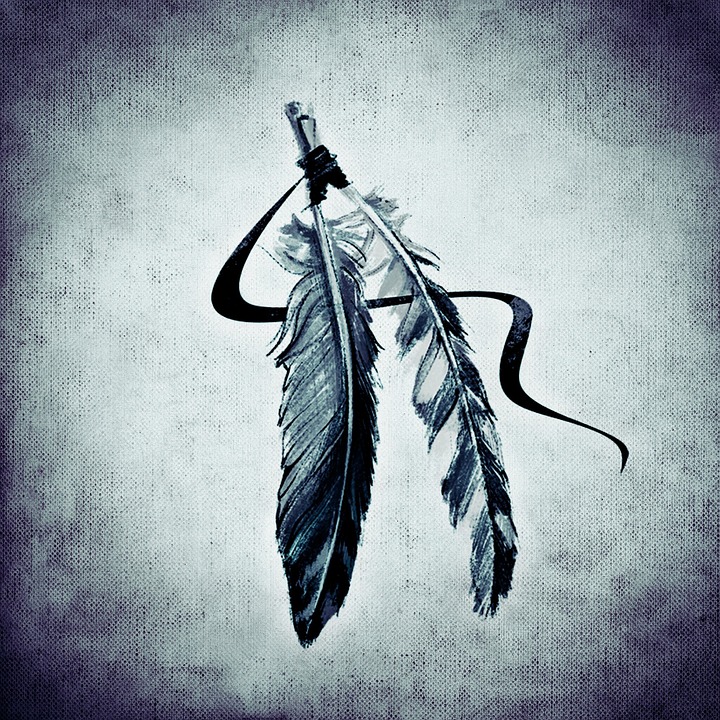 This is a story told by the breeze in the twisting of cords and along the whispering edges of feathers …
This is a story told by the breeze in the twisting of cords and along the whispering edges of feathers …
The night the Pilgrim Woman told this story had a hard frost. Stars glittered against a dark sky and the listeners came scarved and hatted. A blaze of stacked logs greeted them and the Old Chapel smelled of pruned apple branches.
The Lord-by-the-Sea sat aloof in his furs, a glass of wine at his elbow – yet still he listened.
In the morning of the world, the Creator came among the people in the guise of an old woman. She collected nettles from the edge of the wood – and showed them how to make string.
It was good thin string and tough too, and so the people used it to trap birds and fish to eat. Their children grew tall and healthy and the people were well pleased. Only one child was small and weak. He sat beside the old woman and kept her company whilst the people hunted.
Now the other children came back from their hunting trips with presents for the old woman: flowers and fir cones, pretty pebbles and snail shells. But most of all they brought feathers.
Soft down, white as snow and curled like frost. Long tail feathers, iridescent and supple. Plumage rippled and spotted and splashed with all the variety of the river’s flowing. Quill after quill they brought her. The left-behind child kept them in a basket, waiting in hope. Since she had made wonders with mere nettles, what would she do with these?
Now it happened that all the children were left behind in the clearing where the old woman dwelt. Their parents hunted a distant beast and were gone far away. The sunset came and the people had not returned. Some children frowned and others fretted and still others fratched.
So the old woman pulled a length of the finest cord from her supplies, and plucked a feather from the basket of the left-behind child. She began to tell a story – and at every change in the tale, she tied a feather on the cord. At the end of the tale, she tied a holed stone on the end with a knot – then passed it to the left-behind child.
‘Your turn,’ she said. The boy retold the story. He counted down the ladder of feathers to recall each twist and turn. The other children objected.
‘He doesn’t tell it the same!’ they said.
‘He uses different words!’
‘It’s not the way you did it.’
‘Hush,’ said the old woman, the Creator in disguise. ‘He tells it his own way – and that is good.’
She showed the left-behind boy how to make story ladders. Soon all the children begged for a go. Before long, the lowest tree branches around the clearing bent down with dangling string and feathers. The children’s chatter bounced around like jays.
When at last the people returned, they found their children happy and unconcerned. They begged to tell their tales – each one different. As they passed the stories on, the old woman gathered up her few things and disappeared into the shadows of the wood.
‘My work is done,’ she said, and smiled her blessing.

I like this – the birth of stories and storytelling. I want to make ladders out of feathers and string and to hang them from trees in the world. Instead I will write something and maybe it will hang itself someplace. Lovely idea, Philippa and some nice touches here: ‘Since she had made wonders with mere nettles, what would she do with these?’ and ‘still others fratched’ and ‘He tells it his own way – and that is good.’
Your work is done!
Thank you so much, Douglas. So heartening.